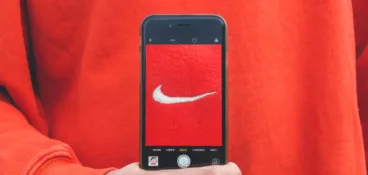Brand style guidelines are your organization’s holy grail when it comes to marketing activities. Yes, they are that important. They are one place where everyone interested in featuring your brand can go to and get all the information they need.
This allows you to create more brand consistency across your organization which in turn leads to a stronger and more recognizable brand.
So let’s look at everything you need to know about brand guidelines, including 13 best brand guidelines examples from some of the biggest brands!
What are brand guidelines?
Brand guidelines are a list of instructions on how a certain brand should be represented externally. This document defines the exact look and the measurements of the logo, color usage, typography, tone and brand voice, how to use illustrations or visualize data, and a lot more.
The purpose of brand guidelines is to give clear instructions for everyone associated with the brand on how to use it in promotional purposes. This includes employees, resellers, partners, and media companies and should cover everything from your social channels to your in-store advertising.
Depending on how much the company values its brand, brand guidelines can be anything from a few pages in a PDF to a full website.
Supercharge your marketing reviews
Share, review, and approve all your content in one place with Filestage.
Why you need detailed brand guidelines at your company
The two most important things when building a strong brand are consistency and the use of recognizable symbols. With that in mind, it becomes vital to create guidelines that will allow everyone representing the brand to consistently use the right fonts, colors, logos and other brand symbols.
One great example is Coca-Cola. Even at the first thought of the brand, we know the exact shade of red that screams Coca-Cola, which fonts represent it, and even the tone that can be associated with it.
But how did Coca-Cola come so far with brand building? The answer is simple – by making sure that every time they sponsor an event, or make a deal with a reseller, they provide them with detailed brand guidelines.
This way they know how and when to use their brand to represent it in the most truthful way possible. And that’s exactly why you need brand guidelines for your brand as well.
But first, let’s look at some of the best brand guidelines examples out there!
13 best brand guidelines examples
Here’s a list of 13 brand guidelines examples that will help you build your own style guide:
1. Zendesk
Zendesk is one of the most popular customer service solutions on the market. The vision of the company is to unlock the power of everyday customer interactions for businesses and give them the right tools to build personalized relationships. How would we know that? From their brand guidelines!
The brand created a comprehensive Wiki where they listed everything their team and other stakeholders need to know about the brand. It begins with a good explanation of what the brand stands for and who the guidelines are for.
After that, they go on to explain in detail everything about their fonts, company logo, typography, colors, tone and voice, and image usage, leaving no space for misinterpretation of the brand.
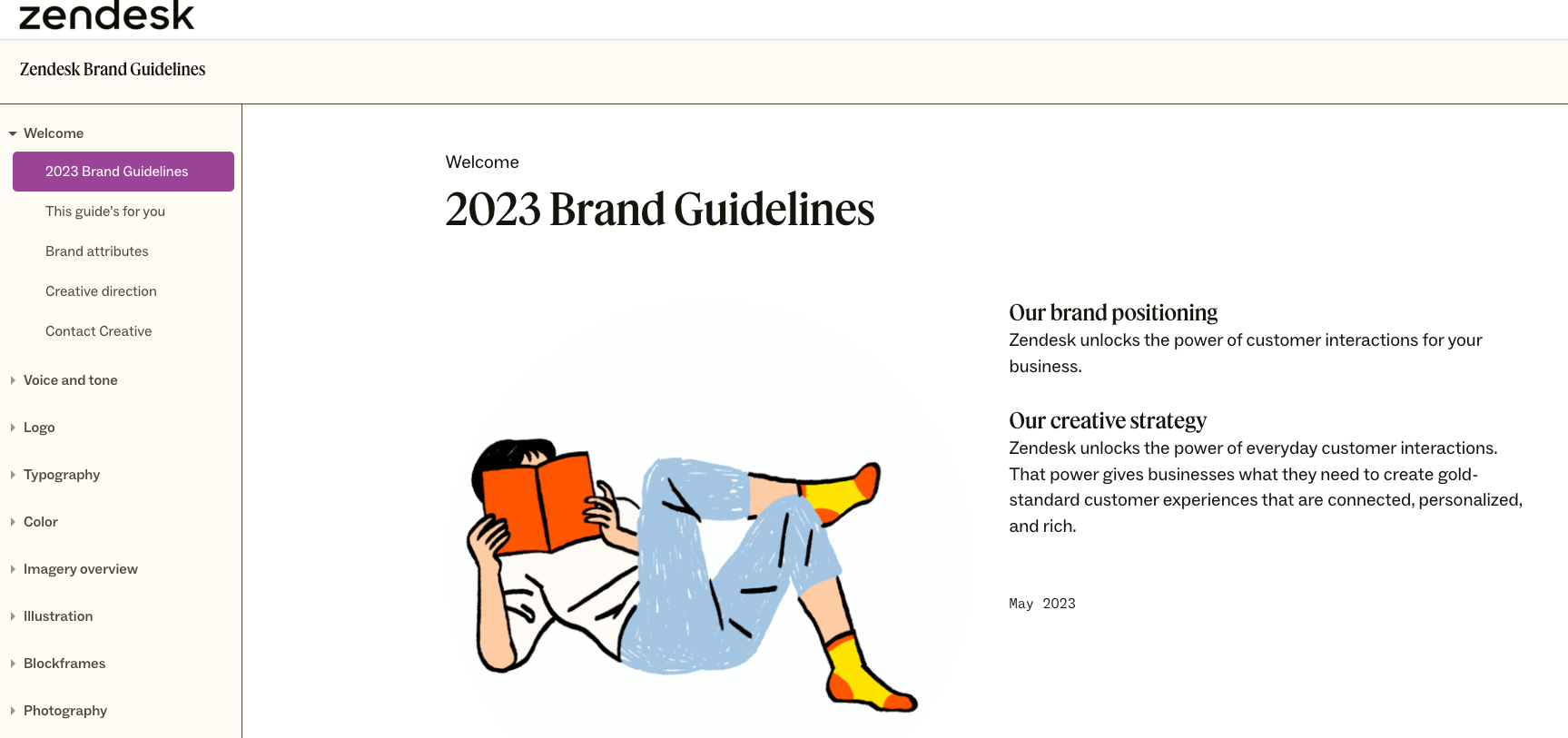
2. Mailchimp
Everyone who works in digital marketing knows the little yellow monkey from Mailchimp. The brand started as the side project of two web design experts, and their focus on the power of branding has always been evident throughout their website and product.
To maintain their brand, Mailchimp regularly refreshes its brand guidelines and even developed a comprehensive writing style guide that they’ve made available online.
Through an interactive web page and approachable copy, Mailchimp brings their brand guidelines to life. This helps everyone involved with the brand get a good understanding of how to best represent it.

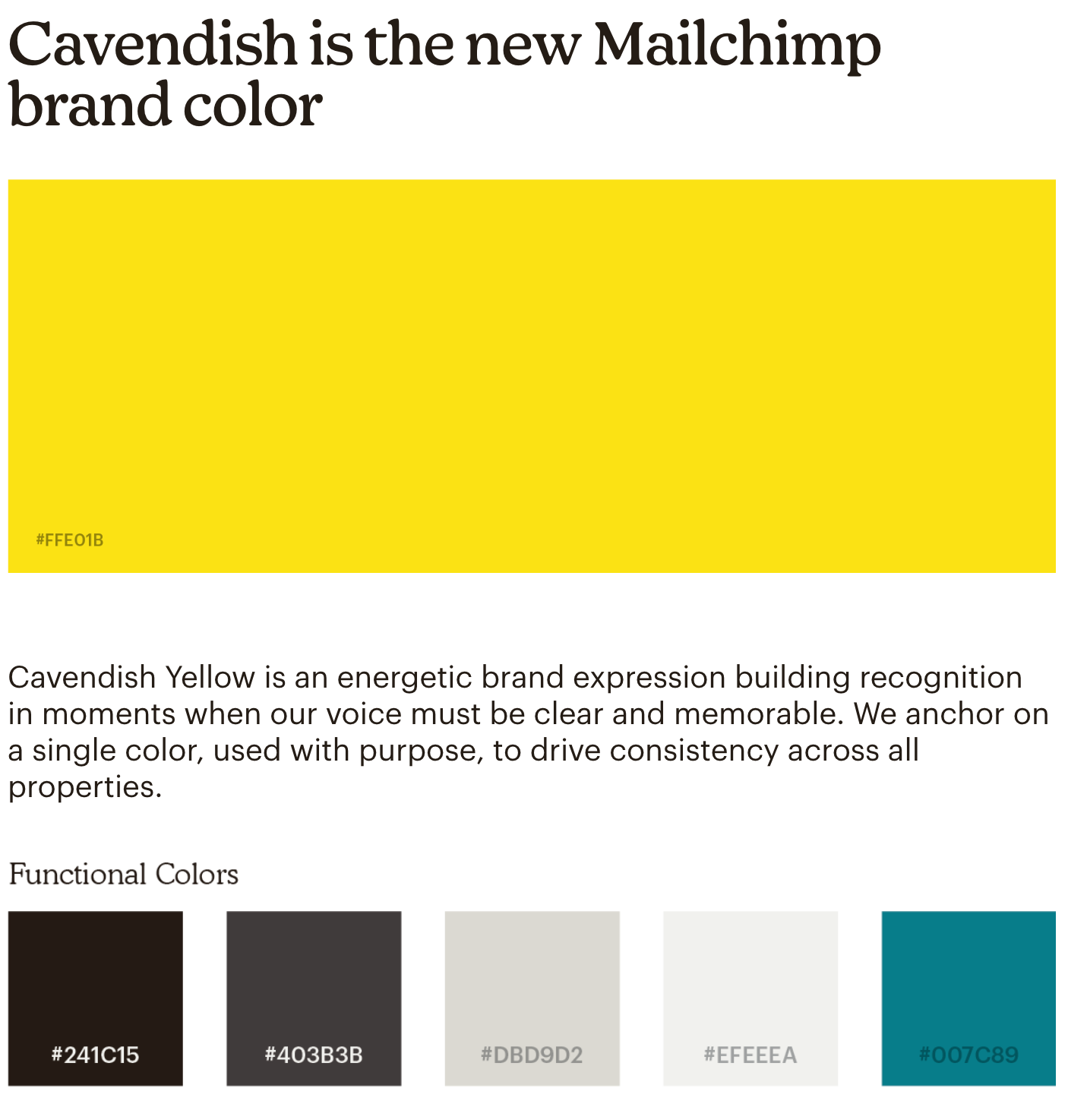
3. Canva
In just a couple of years, Canva has grown from a design tool some students use instead of PowerPoint, into a household name for simple and user-friendly design. And it’s no surprise that such a successful brand takes their brand governance seriously.
Canva built an entire website where everyone interested in its brand specifics can go to learn about their brand pillars, tone of voice, logo, color, typography, useful templates, and even get a display of the UI.
Such comprehensive brand guidelines help everyone involved with the brand to easily represent it. This further reinforces Canva as the leader in the AI graphic design space.
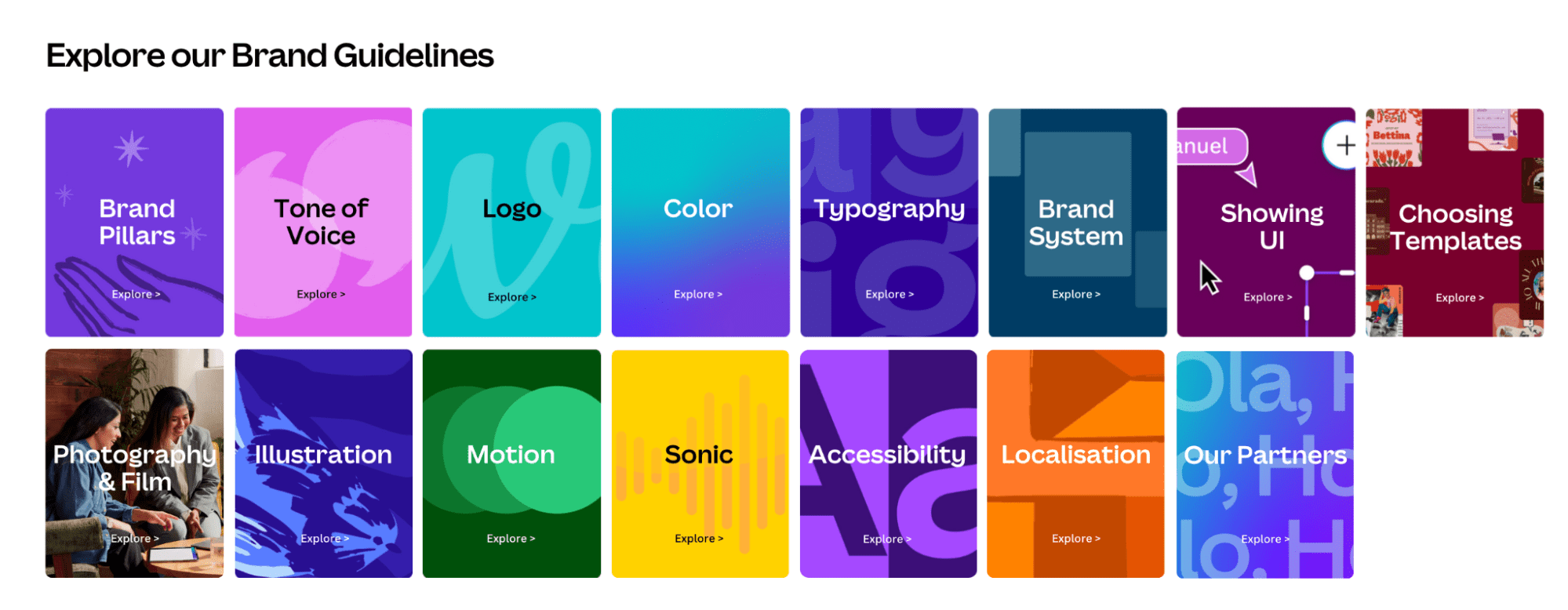
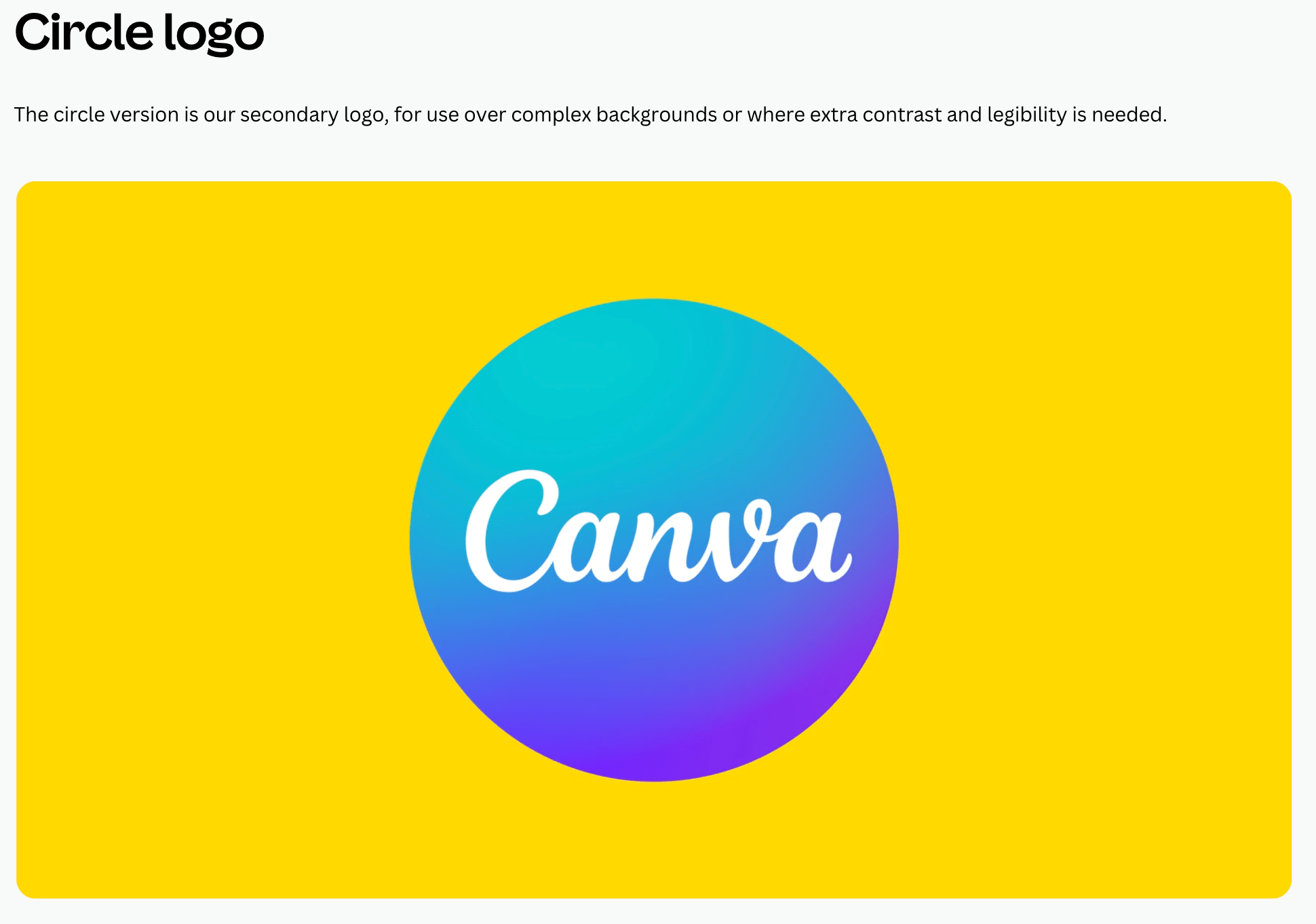
4. Apple
It’s no secret that Steve Jobs was a marketing mastermind. And his vision for Apple was much greater than providing great laptops and cell phones. But building a powerful brand like Apple takes more than just vision.
It’s about dedication, consistency, and great attention to detail in every branding initiative you start. One great example is, you guessed it, Apple’s brand guidelines.
Though their current guidelines aren’t available to the public, the snippets we could find are a testament to the power of Apple’s branding.
Their 56-page guide for resellers covers every potential situation in which their logo and products could be presented, giving detailed instructions on correct and inappropriate representation.
It doesn’t matter if you’re looking at an iPhone ad from Verizon or a point of sale display in one of Apple’s flagship stores. You’ll still get the consistent, premium Apple vibe.

5. Starbucks
There’s no doubt that Starbucks is the biggest coffee brand in the world. They’re competing with millions of coffee shops, but they still manage to hold onto their throne. And that’s not just because of their delicious coffee!
Their powerful branding made their recognizable white coffee cup with a green logo famous worldwide. To make sure their brand keeps strong positioning, Starbucks created an entire website dedicated to creative expression surrounding the brand.
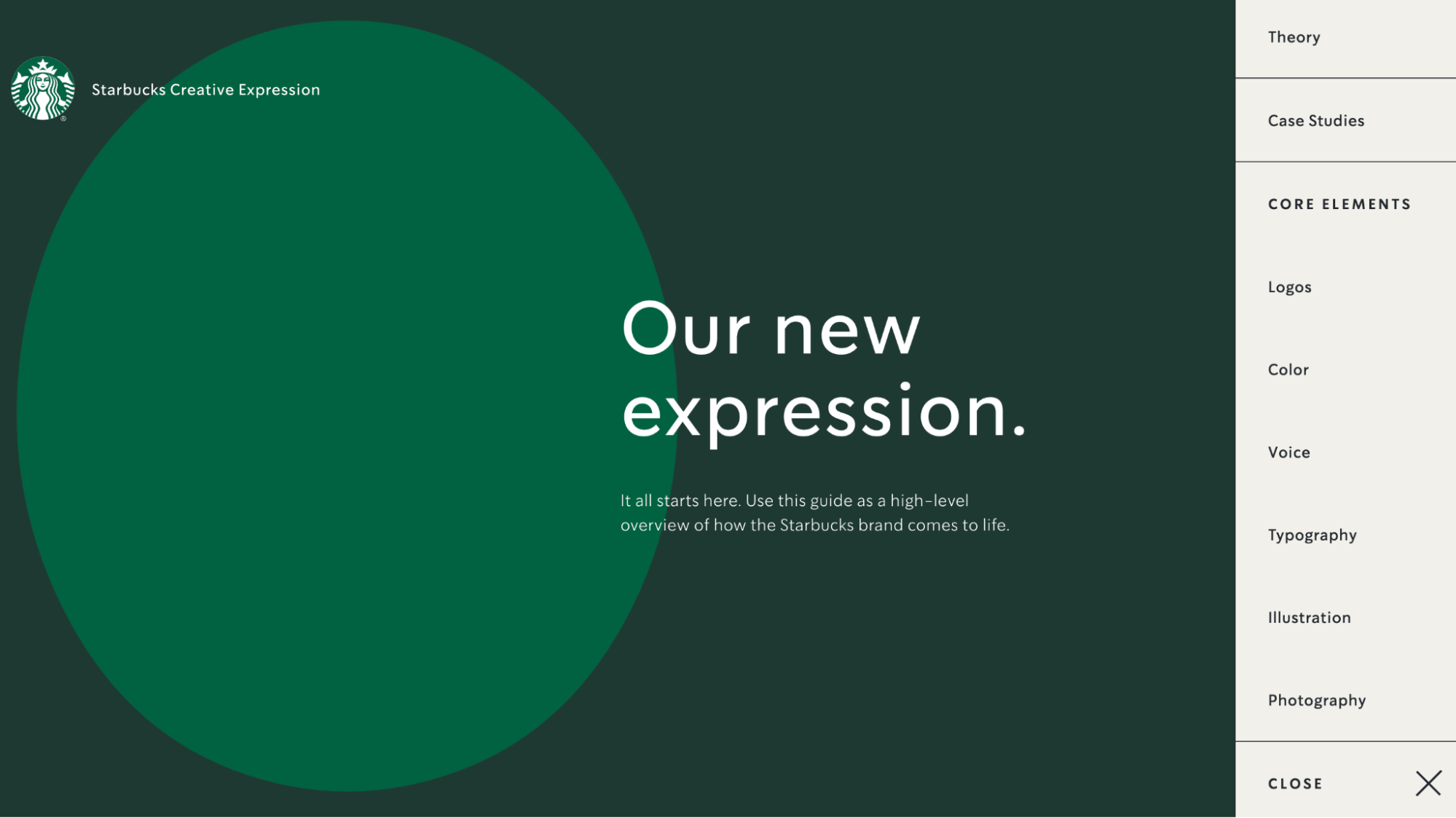
There, they created a comprehensive guide for their brand expression across different channels. This includes different language and design instructions, leaving nothing to chance.
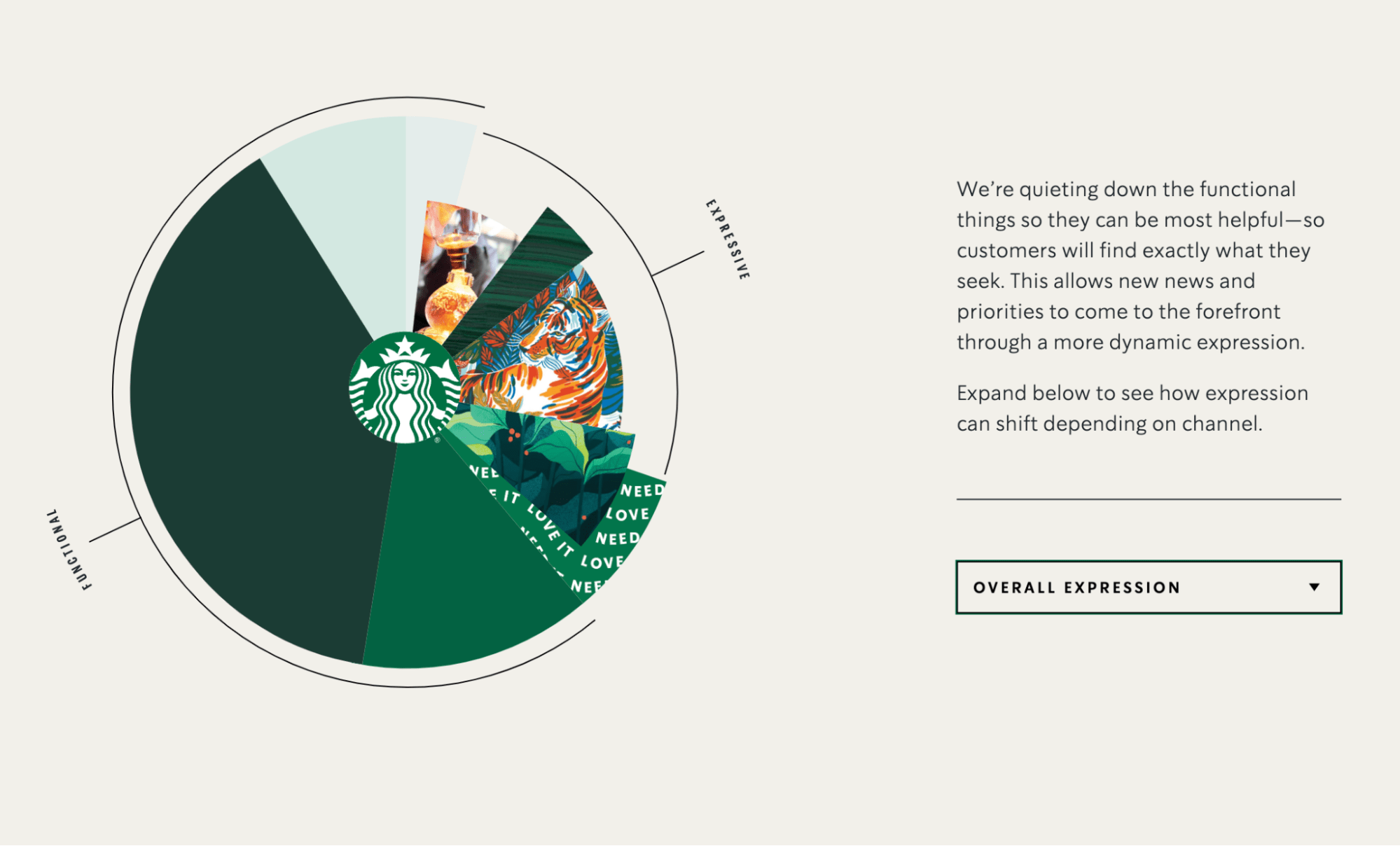
6. Mozilla Firefox
Mozilla Firefox takes things seriously when it comes to representing its foxy brand. But the orange fox that we all know so very well is just a small part of the picture!
To make sure they accurately represent their Mozilla and Mozilla Firefox brands, the company created a dedicated website with two separate brand guidelines.
By visiting the website you can easily navigate through both guidelines and get a better understanding of what the two brands represent, where they overlap, and how to distinguish their representations.
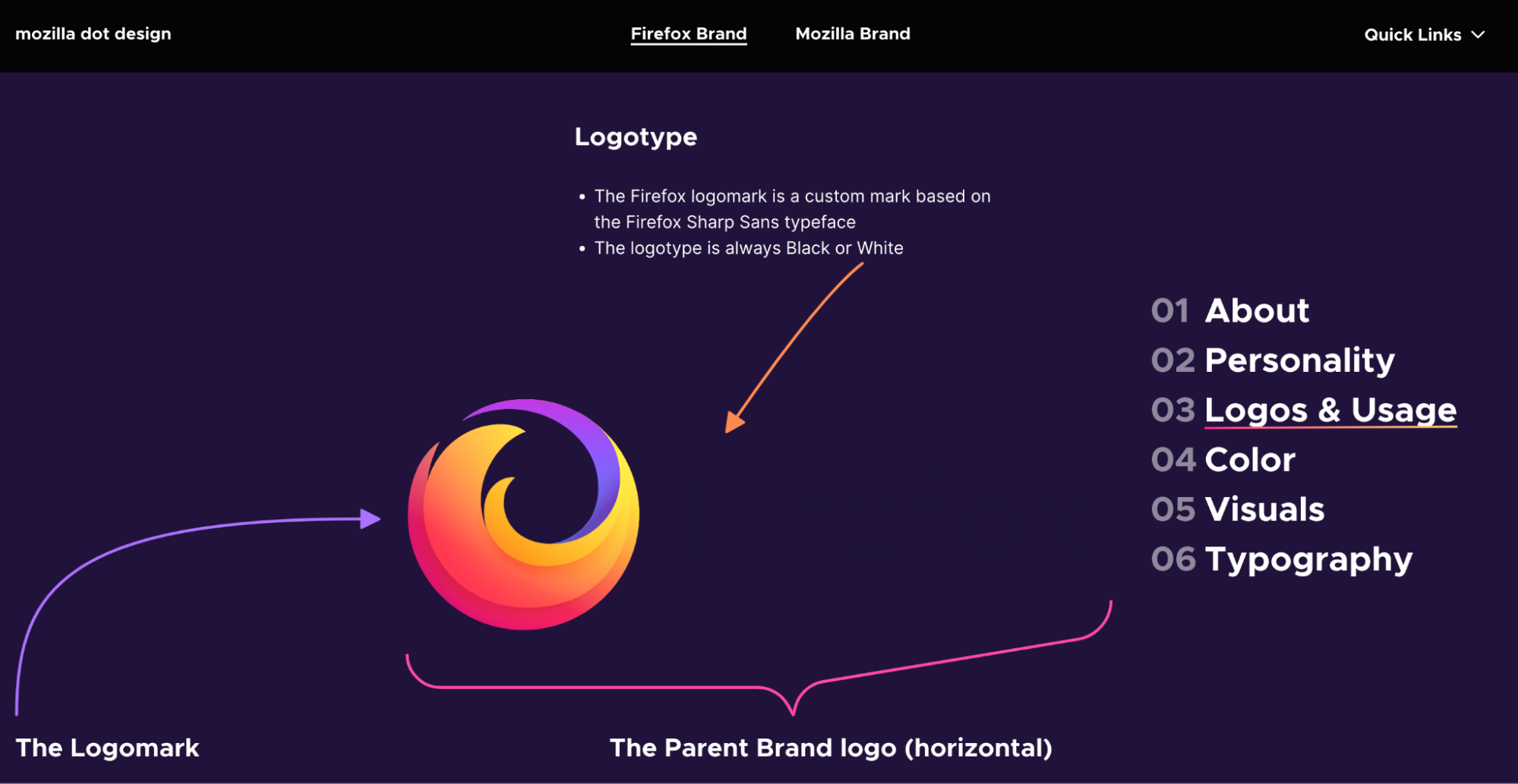
7. Duolingo
If you ever tried learning a new language on your own, or at least a few foreign expressions, you’ve probably heard of Duolingo. Though this brand isn’t as longlasting as some of the branding giants like Apple, it quickly gained a lot of traction for its unique look and feel.
And to make sure their playful brand remains recognizable and relevant, the company developed a comprehensive brand guidelines website. The website features everything from the brand’s identity, writing, illustration, and marketing guides, along with valuable resources.

8. Figma
In the last couple of years, Figma has become synonymous with web design. Everyone from web developers, to marketers, to designers can hardly even imagine their job without Figma. So, as you’d expect, their approach to branding is top notch.
Besides including the more common brand elements like typography and colors, their brand style guide features an extensive “Dos & Don’ts” list. This way, they’re giving everyone interested a more concrete look into how to accurately represent the brand.

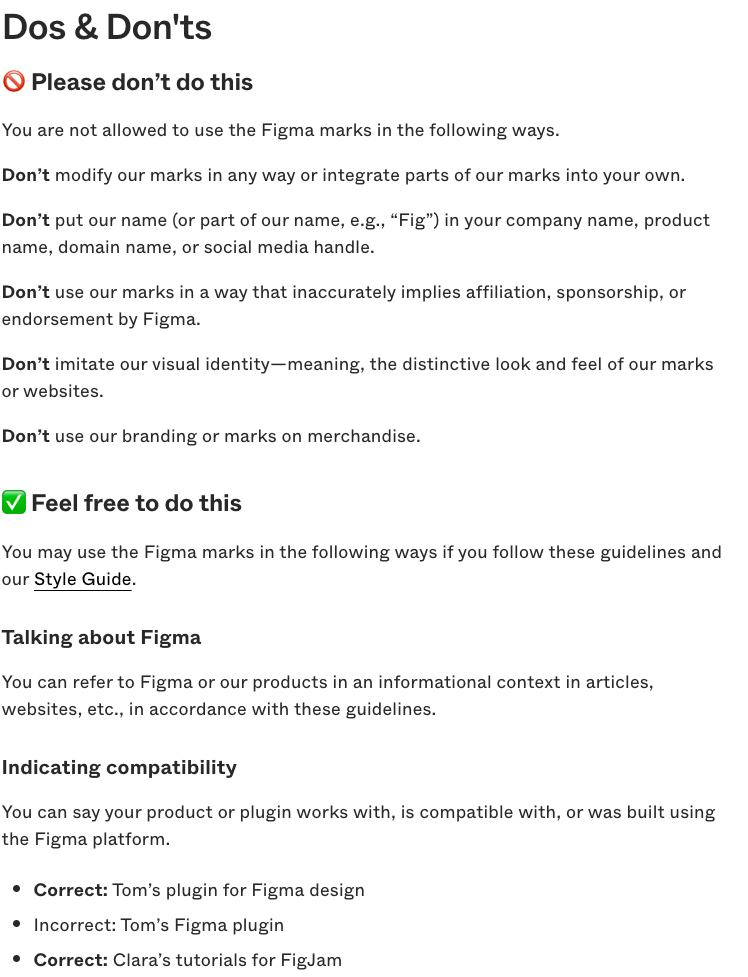
9. Slack
Among many different business messaging apps available on the market, Slack simply stands out. We all know its recognizable purple color, and the informal feel it gives us when communicating with our colleagues.
If you just take a second to think about Microsoft Teams for comparison, you’ll see that you’ll associate completely different traits to the two tools. Despite them both being instant messaging platforms. That says a lot about branding!
To make sure they maintain such powerful branding, Slack created a dedicated website with everything anyone interested in the brand should know. They divided the guidelines into four different sections, including brand identity, key elements, expressions, and experiences.

10. Uber
Before Uber we had taxis. Now every time we see a taxi, we call it an Uber. Talk about powerful branding!
To keep reinforcing their brand, Uber uses numerous tactics. And to make those tactics successful, they need a consistent brand identity.
As a part of their brand style guide, Uber displays a series of logos, shows how to use them, and defines how to use their brand in co-marketing activities (like in the case of Uber Eats).

11. Netflix
Just like Uber quickly became the new taxi, Netflix transformed how we think about television. So much so that Gen Z viewers watch three times more streaming content than live television.
To keep positioning their brand as the leader in this growing streaming services space, Netflix takes branding and brand style guidelines seriously.
On their dedicated brand guidelines website, you can find a detailed look into how to correctly use their logo in various situations. Perfect for making sure you never misrepresent the brand.

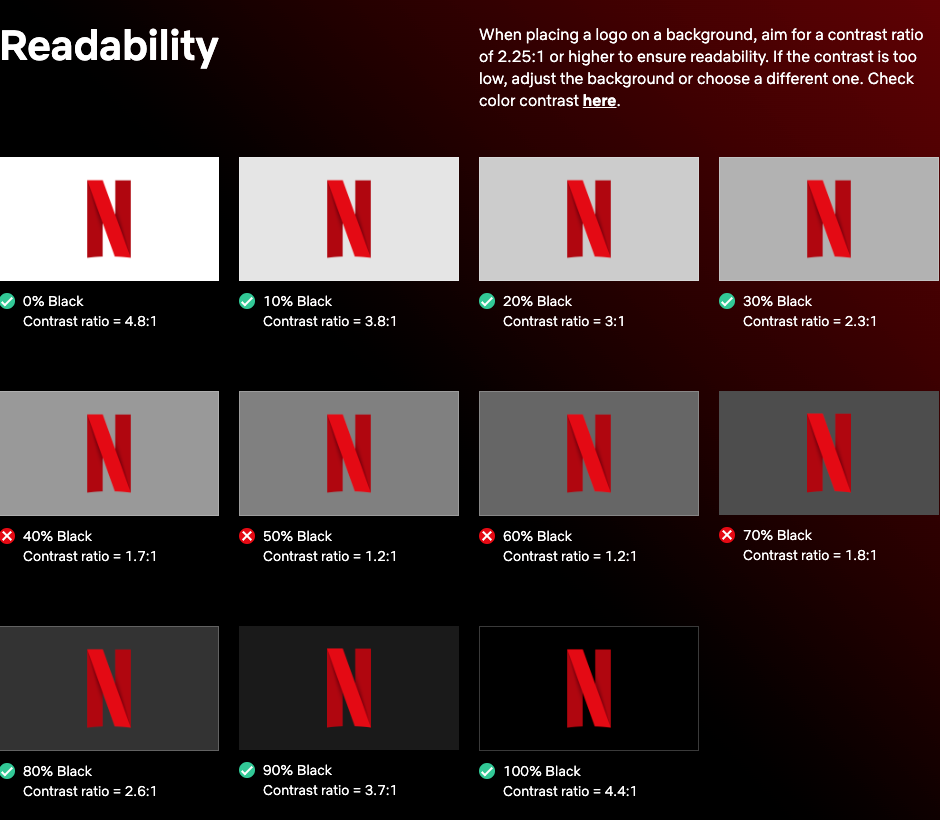
12. Asana
Another major tech company focused on building a strong brand is Asana. Slowly but surely, Asana is becoming a household name for everything productivity and work organization related. And one of the major steps towards conquering the competition is strengthening the brand.
Meet the Asana Trademark Guidelines.
The guidelines have been created to help their partners, licensees, and other authorized third parties understand how to use Asana’s brand assets correctly.
This includes Asana logos, trademarks, service marks, and any other word, name, phrase, image, or other designation that identifies the source or origin of any of Asana’s products or services.

13. LinkedIn
In the last 16 years, LinkedIn has grown into a business community where more than 630 million professionals and over 30 million organizations from around the globe connect.
Building such a global network wouldn’t be possible without focusing a lot of their efforts on branding and differentiating themselves from other social media channels.
In their comprehensive list of brand guidelines, LinkedIn brought together all the brand’s values and the details surrounding their brand symbols. And even just a quick look at the page will give you a good feel for what the brand stands for.

Four key elements of successful brand guidelines
As we’ve seen in these 13 amazing examples of brand style guides, organizations invest a lot of time and resources in creating them. By digging deep into what their brand stands for and how it wants to be perceived, organizations leave nothing to chance.
Here’s a quick look at what makes brand guidelines work:
- Make them as detailed as possible – Your brand guidelines will be used by employees across your organization and even some external stakeholders, and not all of them have a background in marketing. To make sure your brand is always represented the right way, make your brand guidelines as detailed as possible.
- Leave room for flexibility – Though brand guidelines can be pretty strict in some elements (like the exact use of colors, and the positioning of the logo), there should also be some room for flexibility. By giving people a level of freedom when representing your brand, you’ll avoid the risk of sounding overly scripted and fake.
- Be universal yet unique – When creating brand guidelines it’s important to make them as universally applicable as possible. This means that you should incorporate all the usual elements like typography, use of color, core values, tone, and the details about the logo. Yet, within those elements, try to stand out and showcase all the unique traits of your brand.
- Write in plain language – When writing your brand guidelines make sure that everyone can understand their value together with all their elements. This means dumbing down on the marketing or design lingo and focusing on a wider audience. Only this way will the guidelines stick and truly become a go-to-document for all brand related questions within your organization.
How to create brand guidelines in nine steps
Creating brand guidelines takes time and dedication from multiple different teams. This is why so many brands have it on their to-do list, but never quite get around to it.
To help you get started, I’ve rounded up a list of essential steps you need to take to create your own brand guidelines.
Here are nine steps you can follow to create your brand guidelines:
- Define your brand identity
- Create usage guidelines
- Logo usage
- Color palette
- Typography
- Imagery and photography
- Define tone and voice
- Create brand assets and templates
- Perform regular updates
1. Define your brand identity
Defining your brand’s identity is the first, and most important step when creating your brand style guidelines. Only after you’ve established who your brand is and what it stands for can you derive more concrete instructions on how to represent that brand.
Also, make sure to include important stakeholders to this conversation, including C-level executives, marketing, and branding specialists.
Here are some questions you should ask yourself when defining your brand identity:
- What is the core purpose of your brand?
- What makes your brand different from the competitors?
- Who is your ideal customer?
- How would you describe your brand’s personality?
- What are the core values and beliefs that guide your brand’s decisions?
- What promise or commitment does your brand make to customers?
2. Create usage guidelines
Since your guidelines are going to be written for a wider audience, including external stakeholders like partners or resellers, it’s important to give your readers usage guidelines. This will help them navigate this comprehensive guide and help you make sure no one misinterprets it.
Your usage guidelines can be a separate section at the beginning of the style guide, stating in which situations you should consult them. You can also incorporate them within different sections to define how to use each element of the brand. For example: when and how to use certain logos.
3. Logo usage
Most of the brands have different logo versions used for different situations. For example, if your logo is white, you need an alternative for a light background. Or maybe you already have different background colors for different situations.
Plus, your logo is probably aligned horizontally and vertically, and shouldn’t be skewed in any direction. All specifics about your logo should be well defined so you never face its misuse.
4. Color palette
You know how there are just some brands whose brand shades of colors we know by heart. For example, we would always associate a specific shade of yellow and blue with IKEA. And that’s exactly what you should try to achieve with your brand.
Most of us are highly visual and colors simply stick better with us. By going beyond the logo to define your brand’s wider color palette, your customers will have an easier time recognizing you.
5. Typography
Find or design fonts that work best with your brand. Once you have that covered you should specify which will be the primary and secondary font along with examples of appropriate use.
Provide guidance on font sizes, weights, and spacing for various applications. These instructions should also include information about headings, body text, and any other text elements.
6. Imagery and photography
Just like a specific font, a color, and a logo display a certain image of your brand, so should the imagery or photography you use. Define the style of imagery that aligns with the brand identity, whether photography or illustrations, and make sure your brand is accurately represented.
You can provide examples or references of desired images and explain the visual tone that should be used. In this section you can also outline any specific guidelines for sourcing or creating images to maintain brand consistency.
7. Define tone and voice
Defining the tone and voice of your brand is another important aspect of your brand guidelines. Within this section you should define the feel that you are trying to achieve with your copy. I know this sounds pretty vague. But there are actually quite a few concrete things you can define as a part of your brand’s tone and voice.
Is the voice you are trying to define more warm, humorous, or serious? Should the copy be more straightforward or use more technical language? All this and much more can be defined as part of your attempt to build a strong and consistent brand voice.
8. Create brand assets and templates
Not every organization invests time and effort to create brand assets and templates. But that doesn’t mean they shouldn’t. This can include logos, PowerPoint presentation templates, document templates and much more.
Brand assets and templates are a great way for your brand to control what exactly gets published when representing your brand. On the other hand, someone who needs to feature your brand can easily find everything they need in one place. A win-win for all!
9. Perform regular updates
Your organization is a living and breathing organism that changes over time. And it’s only right to adjust your brand guidelines as your organization evolves. So make sure to revisit the guidelines once in a while and adjust them to your organization’s needs.
Final thoughts
If you haven’t already spent some time developing your brand guidelines, hopefully this guide changes your mind and motivates you to do so. By creating your brand style guide you are doing the first, and a major step towards building a stronger and more recognizable brand.
Once you’ve set up your brand guidelines, you need a way to review your content and make sure it hits the mark. To see how Filestage can help, start a free trial today.





